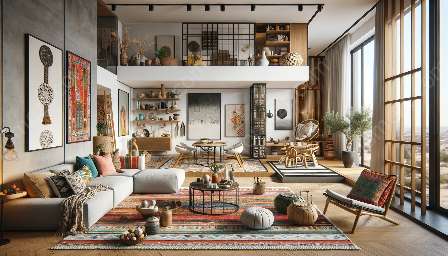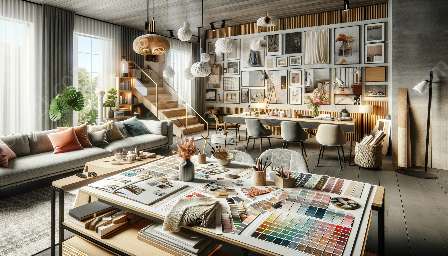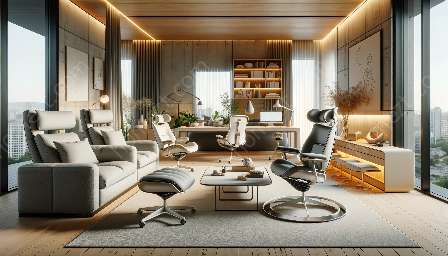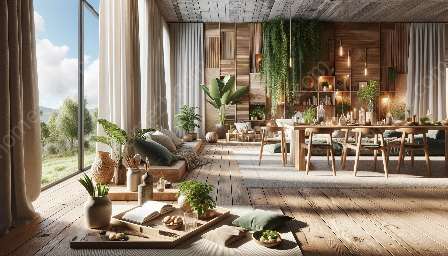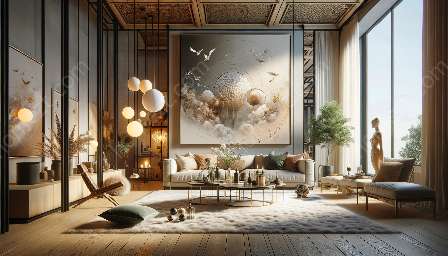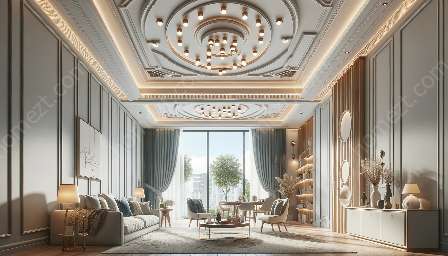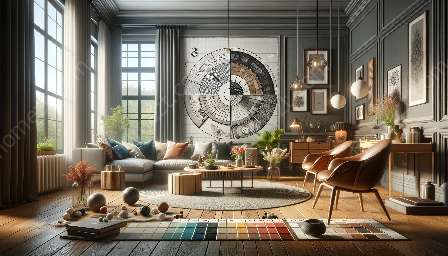Ergonomics plays a vital role in creating a harmonious living space where comfort, functionality, and aesthetics come together. In the context of interior design and homemaking, understanding and implementing ergonomic principles can significantly improve the quality of daily life. From the layout of furniture to the selection of lighting and accessories, every design choice can impact the overall ergonomic quality of a space.
Ergonomics in Interior Design
When it comes to interior design, ergonomics refers to the study of how people interact with their living environment. It focuses on creating spaces that promote well-being and efficiency while minimizing the risk of discomfort or injury. Considerations such as proper posture, ease of movement, and adaptability to different users are essential aspects of ergonomic design.
Benefits of Ergonomics in Interior Design
The integration of ergonomic principles in interior design offers several benefits, including:
- Enhanced Comfort: Ergonomically designed spaces are more comfortable, promoting relaxation and reducing stress.
- Improved Functionality: By considering the needs and habits of the occupants, ergonomic design enhances the practicality and convenience of the living space.
- Health and Safety: Ergonomic features contribute to a healthier and safer environment, preventing strain, fatigue, and potential injuries.
- Personalized Solutions: Tailoring the design to the specific requirements of the inhabitants ensures a personalized and satisfying living experience.
Implementing Ergonomics in Interior Design
Integrating ergonomic considerations into interior design involves various aspects, including:
- Furniture Selection: Choosing furniture that provides adequate support, encourages proper posture, and meets the needs of the users.
- Space Planning: Arranging furniture and defining spatial layouts to optimize functionality and movement within the space.
- Lighting Design: Creating well-lit environments that minimize glare and shadows while enhancing visibility and comfort.
- Material Selection: Utilizing materials that are comfortable to touch, easy to clean, and contribute to a healthy indoor environment.
- Accessibility and Universal Design: Incorporating elements that accommodate users of different ages, sizes, and abilities.
Ergonomics and Homemaking
Homemaking encompasses the activities and responsibilities involved in creating and maintaining a comfortable and functional home. Ergonomics plays a crucial role in optimizing these efforts, ensuring that the home environment supports the well-being and productivity of the inhabitants.
Integrating Ergonomics into Homemaking
Several aspects of homemaking can benefit from ergonomic considerations:
- Kitchen Design: Implementing efficient and ergonomic kitchen layouts that facilitate ease of movement and usage of appliances and storage.
- Organization and Storage Solutions: Designing storage systems and organizational tools that are accessible, easy to use, and tailored to specific needs.
- Cleaning and Maintenance: Selecting ergonomic cleaning tools and establishing systems that minimize physical strain during regular household maintenance.
- Daily Routines and Activities: Creating ergonomic setups for common activities such as reading, working, and leisure to promote comfort and reduce the risk of musculoskeletal issues.
Ergonomics and Interior Decor
While often focused on aesthetics, interior decor can benefit significantly from the integration of ergonomic principles. By considering the ergonomic impact of decorative elements, homeowners can achieve both visually pleasing and functional living spaces.
Balancing Aesthetics and Ergonomics
The following considerations illustrate how to incorporate ergonomic design principles into interior decor:
- Seating and Comfort: Choosing ergonomic seating options that provide adequate support and cushioning without compromising visual appeal.
- Textiles and Fabrics: Selecting fabrics that are not only aesthetically pleasing but also comfortable and easy to maintain.
- Decorative Lighting: Ensuring that decorative lighting fixtures contribute to ambient comfort by providing proper illumination without causing glare.
- Art and Accessories: Arranging decorative elements in a way that enhances visual appeal while maintaining a sense of balance and functionality within the space.
Conclusion
Ergonomics in design is a fundamental consideration for creating living spaces that prioritize comfort, functionality, and well-being. Whether in the context of interior design, homemaking, or interior decor, the incorporation of ergonomic principles enhances the overall experience of living in and interacting with a space. By embracing ergonomics, individuals can cultivate environments that not only look inviting but also support daily activities and contribute to a healthier and more enjoyable lifestyle.
